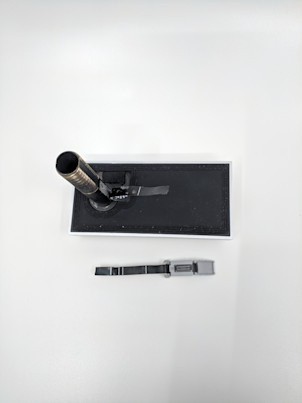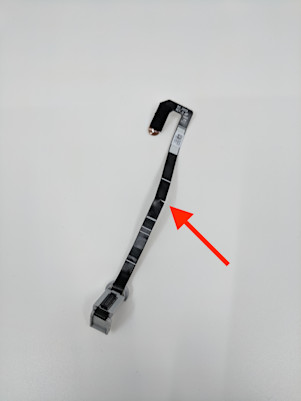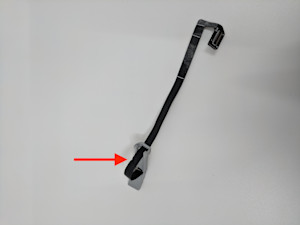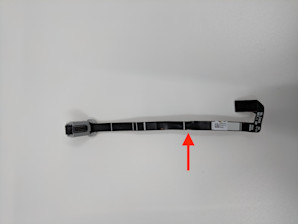Inspecting Door View Cam's flex cable
Click here for instructions on replacing the flex cable.
If you're having trouble with your Door View Cam, it is possible the flex cable was damaged during the installation of the device. This article will teach you the symptoms of a damaged cable as well as how to inspect your flex cable for flaws.
Damaged flex cable symptoms
Depending on where the damage to your flex cable is, you may experience a variety of issues including:
- You're getting black videos but the device still wakes up for button presses and door knocks.
- The LED light on the front lights up when you press the button but there's no ding tone on your mobile device, even though Ring Alerts are turned on.
- The infrared camera isn't turning on at night even though the infrared lights setting is turned on.
- The device isn't detecting motion even though Motion Detection and Motion Alerts are turned on.
- Pressing the front button has no effect.
- The LED light isn't turning on, but when you press the front button you get an alert on your mobile device. although the front button is waking the device up.
To access the flex cable
- Remove the battery cover from the indoor portion of the Door View Cam by pinching it from both sides and pulling it towards you. The cover should pop right off without any force being applied.
- Slide the battery out of the bottom of your Door View Cam.
- Gently grasp the plastic connector on the end of the cable and remove it from the connector port.
Note: The cable is fragile, so be careful not to bend it too much or tear it when removing it from the connector port.
Inspect the flex cable
The following images show the most common types of damage a flex cable may experience. If you see any of these, replace the cable immediately.
- A full tear at any point in the cable.

- A partial tear along the length of the cable. This most commonly occurs on the indoor half of the device but can happen where the outdoor half makes contact with the door.

- A dent on the cable on the indoor half of the device.

- A dent along the length of the cable, most commonly on the indoor half of the device.

- Shearing along the edges, most commonly caused by jagged or sharp edges as the cable passes through the door.

Last updated 6 months ago
